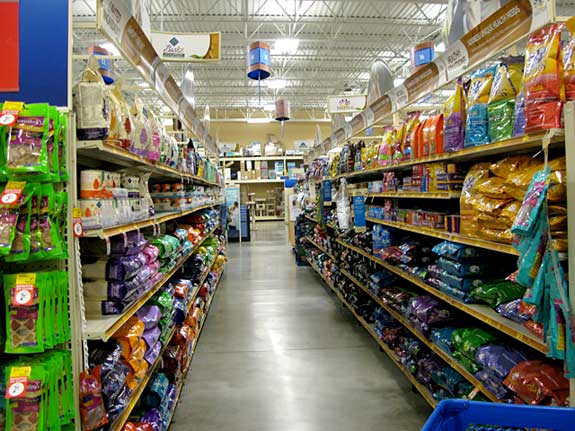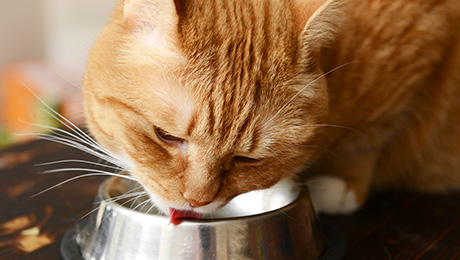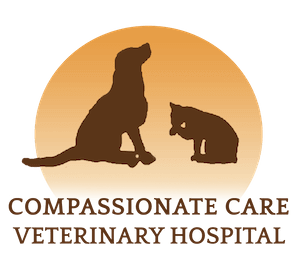Hendren’s Helpful Hints: No Grain, No Pain?
Hello all! Thanks for joining me for another installment of Hendren’s Helpful Hints. Today I want to discuss a topic that is EVERYWHERE – grain-free diets for your pet. Nutrition is monumentally important. Think about it: You feed your dog or cat every day. You are providing them with all the protein, fat, carbohydrates, vitamins, and minerals that they need to sustain life. It is arguably the single most important thing you do for them. It’s no wonder there are so many sources of feeding information out there – the internet, television, radio, magazines, the teenager at your local pet store, your breeder, your groomer, your dog trainer, your next-door neighbor—and they’re all certain their way is the “right” way to feed dogs and cats.
I encourage you to think very critically about your pet’s nutrition and from where you receive information regarding what your pet should be eating. I think that many veterinarians, myself included, see clients who are overwhelmed with the sheer volume of products on the market. It seems that there is a new diet dropping every week and it is impossible to keep up with all the latest trends. Many breeders, people on the internet, and clerks at your local pet store mean well, and may have personal stories about what has worked for their own pets. However, they did not intensively study animal nutrition as part of a medical doctorate program like your veterinarian did. What works well for one dog or cat may very well be detrimental for another.

It’s amazing to me how much misinformation is out there. In 2015, U.S. consumers spent $29.5 billion (yes, that’s billion with a “B”) on pet food [http://www.petfoodindustry.com/blogs/7-adventures-in-pet-food/post/6038-pet-food-sales-update-us-spending-up-22-in-2015]. Imagine that you’re a pet food company – you really want to get a piece of that billion-dollar pie. Now imagine that people in the U.S. have started becoming more obsessed than ever with their own diets. I’ll bet that you can name at least 5 fad diets for humans right now. So, what do pet food companies do? They take advantage of this obsession and our tendency to anthropomorphize (think of animals as if they are human) our pets. Suddenly, pet food diets pop up that are grain-free, low-carb, limited ingredient – all things that are trendy for people right now. These diets fly off the shelf because hey, if it’s “healthy” for humans (and this is debatable) it must be good for Fluffy, right? Right??
Well…not really.
There is NO evidence that grain-free diets are better for pets. Seriously – there are no peer-reviewed scientific articles that say dogs and cats can’t have grain. The fact is, whole grains provide vitamins, minerals, essential fatty acids, and fiber that your pet needs. Surprisingly, some grains even provide a protein source that is easier for pets to digest than some meat sources. I have heard some pet food companies equating grains with fillers. Calling whole grain a “filler” in a dog food is a complete misnomer. A “filler” is a material used to increase bulk that has no nutritional value. As mentioned before, grains have TONS of nutritional value. In fact, they have more nutritional value than some alternative starch sources AND they are more cost-effective. You’re paying a lot more for the carbohydrate in that grain-free food and it’s most likely not even providing your pet with the full nutritional impact of grain. In addition, alternative starch sources such as beans, peas, and lentils can upset the GI tract and do not have more nutritional value than grains [http://vetnutrition.tufts.edu/2016/06/grain-free-diets-big-on-marketing-small-on-truth/].
“Well, Dr. H – my dog or cat has terrible food allergies and when we switched the food to grain-free his skin cleared up.” I hear this a lot. Food allergies are very uncommon in pets. Less than 10% of all allergies we see are food allergies [Grain-Free Pet Foods: Fact vs Fiction. Burns KM. Veterinary Team Brief. 2017;5(2): 28-30]. A food allergy is a hypersensitivity or overreaction to a normal food component. If a pet does have food allergies, by far and away the most common allergy sources are the PROTEIN components of the food. Beef, chicken, and dairy are the biggest offenders. I am willing to bet that there are other factors about that new diet that helped your pet. For instance, did the main protein ingredient of the diet change? Many of these grain-free foods offer salmon, venison, rabbit, or duck as the protein component. These are less antigenically stimulating to the GI tract than the more common proteins found in pet foods. Not every food will be compatible with every pet – in changing the food you may have switched your pet off a food that just didn’t work well with his or her biochemistry. If a grain-free food has worked well for your pet, make sure it is nutritionally complete. Is your pet’s coat shiny? Are they dandruff-free? Are their stools firm? Are they at their ideal body weight? If your answer is “yes” to these questions, and the food has an appropriate AAFCO (see below) guaranteed analysis then you’re probably fine. If you answered “no” to any of these questions your pet’s food may not be ideal for him or her.
One way you can look for a food with higher quality is to check the nutritional adequacy statement on the bag. This is a statement that tells you whether the food has been formulated to meet nutritional levels or if a feeding trial has been performed. Formulated diets are analyzed by computer to make sure they meet the Food Nutrient Profiles established to provide everything a pet needs at their specific life stage (puppy, adult, senior, etc.). Foods that have been through a feeding trial also get analyzed by computer…but these foods go a step further. A group of dogs or cats in the appropriate life stage is raised on the food for a period. This ensures that the food not only has the correct Food Nutrient Profile, but that the pets eating the food will thrive. They are checked by a veterinarian during and after the trial to make sure they are healthy, their coats are shiny, and they don’t have any gastrointestinal problems on the food. They also have blood work run to check organ function. In short, it goes beyond the numbers by making sure the nutrients in the food are bioavailable (they are absorbed and have an active impact in the animal’s system). This translates to an increased chance of bioavailability for your pet [http://talkspetfood.aafco.org/readinglabels#Adequacy].

I also want to touch on the vilification of meat by-products in pet food. The definition of meat by product per the Association of American Feed Control Officials (AAFCO) is: “the non-rendered, clean parts, other than meat, derived from slaughtered mammals. It includes, but is not limited to, lungs, spleen, kidneys, brain, livers, blood, bone, partially de-fatted low temperature fatty tissue, and stomachs and intestines freed of their contents. It does not include hair, horns, teeth and hoofs [http://www.aafco.org/Consumers/What-is-in-Pet-Food].” In other words, the stuff from an animal that most people here won’t eat. Organ tissue is nutrient-packed and there are many cultures both inside and outside the U.S. where humans do eat these parts. If you’ve ever seen your dog or cat devour a squirrel or rabbit in your yard you know that they eat the whole animal – guts and all. And the intestines haven’t even been “freed of their contents!” They also don’t bother to remove the hair before chowing down. Meat by products have the advantage of having all the extra bits of the animal without the danger of bowel perforation from ingestion of a bone. It ensures that no part of the animal we use for meat goes to waste. Don’t be afraid to purchase foods with meat by-product in addition to a meat source!

And while we’re at it – let’s talk about a food claiming to be “natural.” This is one of my biggest pet peeves of pet food marketing. That’s right, I said marketing – because that’s just what it is. Directly from the AAFCO website:
“’Natural’ is a descriptive term that sounds positive, even though misperceptions about the word abound in regards to pet food labeling and claims. In the past, the term was undefined in both state and federal feed control jurisdictions and was not seen in the marketplace. But in an effort to appeal to customers (emphasis added by me), marketers have increasingly used the term on pet food product labeling.
Presently, AAFCO’s definition of natural is:
a feed or feed ingredient derived solely from plant, animal or mined sources, either in its unprocessed state or having been subject to physical processing, heat processing, rendering, purification, extraction, hydrolysis, enzymolysis or fermentation, but not having been produced by or subject to a chemically synthetic process and not containing any additives or processing aids that are chemically synthetic except in amounts as might occur in good manufacturing practices.
In the majority of states, which have adopted the AAFCO Model Bill and Model Regulations, pet food labelers/guarantors must comply with this definition to display the term.
The U.S. Food and Drug Administration (FDA) has not yet defined natural in relation to pet food labeling. Instead, it relies on the federal requirement that labeling must not be false or misleading.
Breakdown of the Definition
· There is no requirement or statement that natural feeds or ingredients are safer than those produced by a chemically synthetic process.
· Natural is a liberal term that includes more ingredients than it excludes—most pet food ingredients are derived from ‘plant, animal or mined sources.’
· A feed ingredient can be subject to a number of commonly-used processes during the manufacturing process and still be deemed natural.
· A feed or feed ingredient can contain trace amounts of chemically synthetic compounds and still be considered natural [http://talkspetfood.aafco.org/natural].”
So, the next time you think something labelled as “natural” means it’s superior, think again. It is a word added to products because companies know that people like to see it – it doesn’t mean anything substantial about the product. I encourage all of you to go to the AAFCO website if you really want to educate yourselves about pet food labels and how to read them: http://talkspetfood.aafco.org/readinglabels.
Considering this information, what do you feed your pet? In this sea of marketing and misdirection, how do you know what to give your furry friend? Just ask! The veterinarians at Compassionate Care are happy to discuss your dog’s individual needs and direct you to a great food. There are many over-the-counter diets that are appropriate. As part of your pet health care team, we want to make sure the pet in your life is truly receiving the best nutrition every day!
Here’s to Happy, Healthy Pets!
Dr. Lauren Hendren
